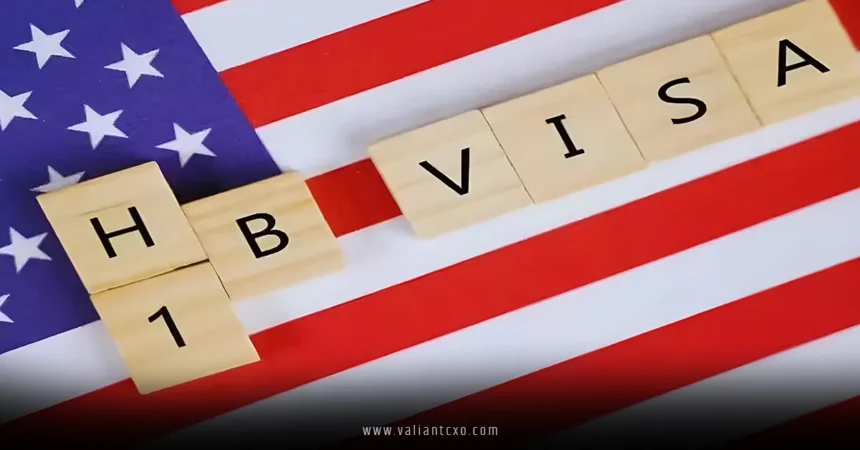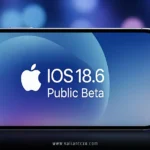H-1B Visas Changes Approved by White House are shaking up the immigration scene like never before, and if you’re a skilled worker eyeing a spot in the U.S., you might want to sit up and pay attention. Imagine you’ve got killer tech skills from overseas, and suddenly the rules of the game shift—it’s no longer about luck in a draw but how much your potential boss is willing to shell out. That’s the gist of these updates, approved recently by the White House, aiming to prioritize high-wage jobs over a random lottery. But hey, don’t worry if this sounds overwhelming; I’ll break it down step by step, like chatting over coffee about your next big career move.
As someone who’s followed immigration trends closely—drawing from years of analyzing policy shifts and their real-world ripples—I can tell you these H-1B Visas Changes Approved by White House aren’t just bureaucratic tweaks. They’re a potential game-changer for thousands of professionals, especially in tech and engineering. We’ll dive into what they mean, why they’re happening now, and how you can stay ahead. Stick with me, and by the end, you’ll feel like an expert yourself.
What Exactly Are H-1B Visas?
Before we unpack the H-1B Visas Changes Approved by White House, let’s get the basics straight. Think of the H-1B visa as your golden ticket to working in the U.S. if you’re a specialist in fields like IT, medicine, or finance. It’s designed for “specialty occupations” where you need at least a bachelor’s degree or equivalent experience. Every year, the U.S. caps these at 85,000—65,000 for general applicants and an extra 20,000 for those with U.S. master’s degrees or higher.
Why does this matter? Well, demand always outstrips supply. In fiscal year 2026, for instance, registrations poured in at over 340,000, turning the selection into a high-stakes lottery. Employers file petitions, and if you’re picked, great—you can work here for up to three years, extendable to six. But if not? Back to square one. These visas have fueled innovation in Silicon Valley and beyond, bringing in talent that powers companies like Microsoft and Google. Yet, critics argue the system gets abused by outsourcing firms paying rock-bottom wages, undercutting American jobs.
Drawing from reliable sources, the program has evolved since the 1990s, but recent pressures—like economic recovery post-pandemic—have spotlighted reforms. Now, with the H-1B Visas Changes Approved by White House, we’re seeing a pivot toward valuing salary as a proxy for skill.
The History Behind H-1B Visa Reforms
H-1B visas didn’t just pop up overnight; they’ve got a backstory full of twists. Back in the Immigration Act of 1990, Congress created them to fill skill gaps in the workforce. Fast-forward to the 2000s, and booms in tech led to cap increases, but then recessions brought scrutiny. Remember the Trump era? His administration pushed hard for changes, like stricter wage requirements, to “protect American workers.” One big idea was ditching the lottery for a wage-based ranking, but courts and the Biden team put it on ice.
Now, in 2025, we’re circling back. The White House, under renewed focus on immigration, has greenlit a proposal from the Department of Homeland Security (DHS). It’s like reviving an old recipe with a modern twist—aiming to make the system fairer by rewarding higher pay. Why the resurgence? Economic studies suggest prioritizing senior roles could boost the program’s value by nearly 90%. But is it really about economics, or politics? Rhetorical question: In an election cycle, these moves often blend both.
These H-1B Visas Changes Approved by White House build on that history, signaling a shift from chance to merit—measured in dollars.
Breaking Down the H-1B Visas Changes Approved by White House
Alright, let’s get to the meat: What are these H-1B Visas Changes Approved by White House all about? The core idea is swapping the random lottery for a “weighted selection process.” Picture a raffle where tickets cost more for VIP seats—instead of equal odds, higher-wage offers get more entries or priority.
The proposal, cleared by the White House’s Office of Information and Regulatory Affairs (OIRA), comes from DHS. It revives a 2021 Trump-era plan but with tweaks. Under the old lottery, everyone had the same shot once registered. Now? Petitions could be ranked by Occupational Employment Statistics (OES) wage levels—Level IV (highest) down to Level I (entry-level). Higher levels might get multiple “chances” in the draw, like four for top earners versus one for starters.
Why this switch? Proponents say it curbs abuse. Some firms flood the system with low-wage bids, gaming the odds. By weighting toward higher salaries, the changes ensure visas go to truly “highly skilled” roles, aligning with “Buy American, Hire American” vibes. But hold on—is salary the best judge of skill? A fresh grad genius might earn less than a veteran, yet bring fresh ideas.
How the Weighted Selection Works in H-1B Visas Changes Approved by White House
Diving deeper into the H-1B Visas Changes Approved by White House, the mechanics are straightforward yet impactful. Employers still register electronically during a short window, paying a fee. But instead of a blind pick, the system weighs factors like offered wage.
For example, if you’re at OES Level IV (say, $200,000+ in tech), your petition might have quadruple the selection weight compared to Level I ($100,000). Data from past years shows most approvals were at lower levels, so this could flip the script. It’s analogous to college admissions favoring high GPAs—rewarding proven value.
Critics point out flaws: International students on OPT (Optional Practical Training) often start at entry wages, so they might get squeezed out. And what about fields like AI, where young talent drives breakthroughs? These changes could reshape entire industries.
Timeline and Next Steps for H-1B Visas Changes Approved by White House
The H-1B Visas Changes Approved by White House aren’t law yet—they’re at the proposal stage. After OIRA’s nod, DHS will publish in the Federal Register, kicking off a 30-60 day comment period. That’s your chance to chime in if you’re affected.
Then comes review of feedback, possible revisions, and a final rule. Implementation might hit for FY 2027 registrations. Immigration experts predict quick movement, given the administration’s push. If you’re planning to apply, mark your calendar—delays could mean missing out.
Impacts of H-1B Visas Changes Approved by White House on Foreign Workers
If you’re a foreign professional dreaming of U.S. shores, the H-1B Visas Changes Approved by White House could be a mixed bag. On one hand, if you’re experienced and command top dollar, your odds skyrocket. It’s like upgrading from economy to first class in the visa queue.
But for recent grads or those from countries like India—where over 70% of H-1B visas go—these changes might sting. Many start at lower wages, building up. Under the new weights, entry-level spots could vanish if higher-paid petitions dominate. Imagine training for a marathon only to find the starting line moved—frustrating, right?
Broader effects? It might deter international students from U.S. universities, hurting diversity in STEM. Yet, for those who adapt, it could mean better pay and job security.
Effects on Indian Applicants in H-1B Visas Changes Approved by White House
Indians, listen up: The H-1B Visas Changes Approved by White House hit close to home. With India dominating approvals (think Tata Consultancy, Infosys), a wage focus could favor established pros over fresh talent. Some see it as a setback, potentially reducing visas for lower-wage roles often filled by Indian firms.
But flip it: Higher wages mean better living standards. If you’re negotiating, use this as leverage. “Hey boss, to boost my H-1B chances, how about a bump?” It’s empowering in a way.
Pros and Cons of the H-1B Visas Changes Approved by White House
Every change has two sides, and the H-1B Visas Changes Approved by White House are no exception. Pros first: It combats exploitation. No more undercutting locals with cheap labor—the system rewards quality over quantity. Economic boosts? Studies say prioritizing high earners could amp up innovation and GDP contributions.
Cons? It might stifle startups unable to match Big Tech salaries, limiting where talent flows. Plus, it assumes wage equals worth, ignoring intangibles like creativity. Rhetorical nudge: Is a high salary always a sign of superior skill, or just seniority?
Balancing act: These changes aim for fairness but risk alienating emerging talent.
What Employers Need to Know About H-1B Visas Changes Approved by White House
Bosses, this one’s for you. The H-1B Visas Changes Approved by White House force a rethink on hiring. To snag top foreign talent, you might need to up ante on offers. Microsoft, for example, filed thousands last year amid layoffs—now, they’ll prioritize premium roles.
Strategy tip: Audit your wage structures. Align with OES levels to maximize weights. It’s like optimizing your resume for ATS—small tweaks yield big results.
Navigating the New Landscape: Tips Amid H-1B Visas Changes Approved by White House
Feeling lost? Here’s practical advice on the H-1B Visas Changes Approved by White House. First, boost your value: Pursue advanced degrees or certifications to hit higher wage tiers. Network aggressively—find employers willing to pay premium.
Consider alternatives like O-1 visas for extraordinary ability, or EB-2 green cards. Stay informed via official channels. And if you’re an employer, train HR on the shifts.
Analogy time: Think of it as upgrading your phone plan—pay more upfront for better coverage long-term.
How H-1B Visas Changes Approved by White House Fit into Broader Immigration Policies
These H-1B Visas Changes Approved by White House aren’t isolated. They’re part of a Trump redux on immigration—tighter borders, merit-based systems. Compare to family visas or DACA; it’s all about economic utility.
Critics say it overlooks humanitarian aspects, but supporters argue it’s pro-American worker. What’s your take? In a global economy, balancing acts are key.
In wrapping up this deep dive, we’ve covered the nuts and bolts, from basics to implications. The H-1B Visas Changes Approved by White House signal a bolder, wage-driven future for skilled immigration. Whether you’re applauding or adapting, knowledge is power. So, take action—research, prepare, and advocate. Your U.S. dream might just need a salary upgrade to thrive. Stay motivated; change brings opportunities for those ready to seize them.
FAQs
1. What do the H-1B Visas Changes Approved by White House mean for new applicants?
The H-1B Visas Changes Approved by White House shift from a lottery to wage weighting, so if you’re offering or earning higher salaries, your chances improve. Entry-level folks might face tougher odds, but it’s all about proving your worth through pay.
2. How will the H-1B Visas Changes Approved by White House affect Indian IT professionals?
For many Indians relying on H-1B, these changes could prioritize senior roles with better pay, potentially reducing slots for junior positions. It’s a call to aim higher in negotiations.
3. Are the H-1B Visas Changes Approved by White House final, or can they still be altered?
Not yet final—the proposal opens for public comments soon. Your input could shape the outcome, so voice your thoughts during the review period.
4. What alternatives exist if the H-1B Visas Changes Approved by White House make it harder to get approved?
Look into L-1 for intracompany transfers or TN for Canadians/Mexicans. Green card paths like EB-3 might be slower but more permanent options.
5. How can employers prepare for the H-1B Visas Changes Approved by White House?
Employers should review wage offers against OES levels and focus on high-value hires. Consulting immigration lawyers early can help navigate the weighted system smoothly.
For More Updates !! : valiantcxo.com


